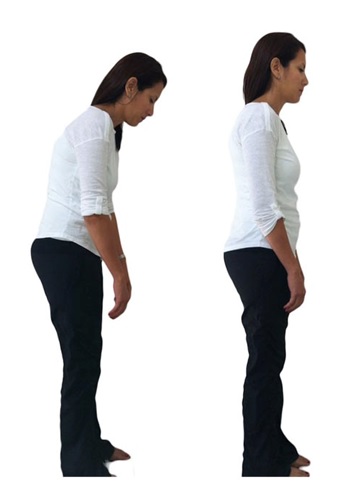
How Do I Look? Look and Feel Better with Posture Correction
Everybody wants to look good and impressive. But did you ever stop and think about how good your posture looked?
Like almost everyone the answer was probably ‘not really’ or ‘never thought about it’ or something else along those lines.
Having good posture is not just about impressing in your latest job interview or looking good for your next selfie etc. It is intrinsically linked to your health and wellbeing, therefore it’s a good idea to identify if yours is good or bad.

You can test it yourself and there is no need to see a specialist for any tests. This can be done pretty much anywhere but its best to get a friend or someone else to take a picture of you as you test.
The instructions are simple; Whilst standing, breathe in, breathe out, relax and let your body slump. You may want to practice this a few times because its often hard for people to ‘let their body go’ when trying to slump.
You ‘slump’ after breathing out because you’re less likely to use muscular effort to keep yourself up during exhaling. We want to identify the real shape of your structure when you aren’t working to hold it up.
If you have good posture, your head should stay level, both sides of your body should be even and you should not collapse forward or backward at any point in your body. Remember you need relax and let go so your body can slump into its real configuration.
Common things we spot are head dropped down, uneven shoulders, knuckles turned forwards, head cocked to one side, feet together or wider than shoulder-width, feet turned in/out or flat. These are signs that your posture is crooked.
Now this one is the most overlooked indicator of posture. Looking into a mirror take a good look at your face. Are both sides symmetrical? Some of the things we look for are the shape of your head, the symmetry of the eyes, ears, nose, and wrinkles, or any crowding of the teeth. These are further signs that your frame is damaged. We will talk more on this in another post when tackling the sphenoid bone and how it can influence the look and shape of your head/face.
For the next test, you will need your friend again. Get them to take a full length, side view photo. Remember to breathe in, breathe out, relax and let your body slouch.
There should be a straight, vertical line through your ankle, knee, hip, shoulder, and ear. All this should happen with no effort.
Common issues we find are that the head drops down or the chin pokes out. The shoulders are forward, the middle part of your back is rounded or there is a hump, or your lower back curves in too much and makes your belly stick out. The beltline of your trousers should be horizontal. If not, it is indicative of a pelvic tilt. People often have their knees locked straight meaning that their hamstrings and calf muscles will be tight.
Another cool test is to sit on your favourite seat and do the same thing. You should remain upright even when relaxed i.e. no backrest needed and not using your muscles to sit straight. The combination of most seats being badly designed and your crooked frame means that 99% of you will not stay up without effort. If you sit a lot during the day, this causes lots of problems. Your organs become compressed and your muscles become overactive, tight and sore.
Can you see how hard you have been working just to stay upright? No wonder your body hurts!
No matter what your age, gender, level of health or fitness, if you’re doing the tests properly you will have some kind of distortion in your posture. Its inescapable due to our modern lives and more fundamentally to how our bodies have been designed and how it functions.
Along with any posture distortions you may have accompanying pain, soreness, aching or just general discomfort. Conventional thought is that this ‘degeneration’ of posture is normal and happens simply with age or lack of physical activity. This IS NOT the case. If anything, age related pain and degeneration as well as a lack of or desire to be physically active is DUE to poor posture, not as a result of it.
Okay, so my posture is bad. NOW WHAT?!
Posture problems are inherently linked to physical symptoms such as pain, stiffness, tiredness, numbness, tingling, weakness, swelling, etc. Poor posture can either be left alone as you don’t believe you have any negative symptoms as mentioned (which is fine if you wish) or you can do something about it.
The options relating to dealing with poor posture are numerous including various therapies, exercises and even gadgets that you wear. However, there is only one true solution. Correct the posture itself.

Here at Body Centric Wellness we are equipped with the tools and know-how to get you back to being upright and well again without the need for exercises or gadgets. Through the application of Advanced BioStructural Correction™ (ABC™) we can take your poor posture back to how it should be as in the picture above.
These are not baseless claims, ABC™ has been helping thousands of people around the world for more than 20+ years. By correcting the postures of these individuals we in turn improve their health and lives.
Try us out and experience first-hand how we can give you the results no other method can. Book your FREE consultation and transform your life for the better.